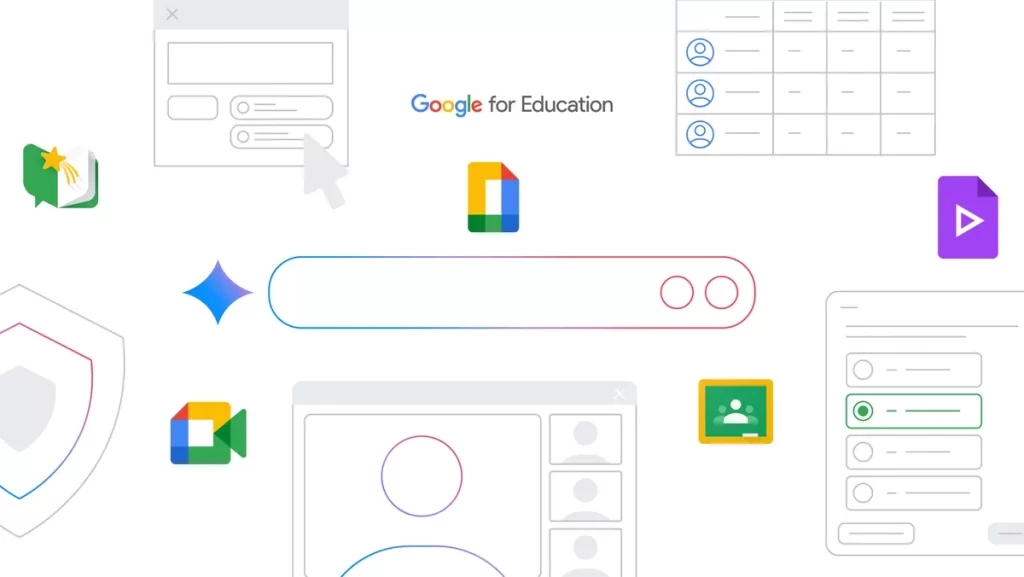
In the ever-evolving landscape of education technology, Google continues to push boundaries with innovative tools designed to enhance teaching and learning. Google Workspace for Education, a suite of productivity and collaboration tools tailored for educational environments, has recently introduced new AI-powered features that promise to transform how educators and students interact with technology. Here’s a look at the latest advancements and how they can make a significant impact in the classroom.
AI-Powered Writing Assistance with Google Docs
One of the standout features is the integration of advanced AI writing tools in Google Docs. These tools offer real-time suggestions for grammar, style, and tone, helping students refine their writing skills more effectively. The AI can also generate content ideas based on prompts, making brainstorming sessions more productive and aiding in the development of creative writing projects.
Benefits for Educators:
Streamlined feedback process.
Enhanced support for students with diverse writing needs.
Reduced time spent on manual editing.
Benefits for Students:
Improved writing quality through instant feedback.
Assistance with grammar and style improvements.
More engaging and supportive writing exercises.
Smart Composition in Google Slides
Google Slides now features AI-driven design suggestions that automatically enhance presentations. The AI analyzes slide content and suggests layout changes, color schemes, and font styles that improve visual appeal and coherence. This feature allows students and educators to create polished presentations effortlessly.
Benefits for Educators:
Efficient creation of visually compelling presentations.
Reduced need for design expertise.
More engaging lesson materials.
Benefits for Students:
Easier to produce high-quality presentations.
Encourages creativity and experimentation with design.
Saves time on formatting and design tasks.
Enhanced Data Insights with Google Sheets
Google Sheets has been upgraded with AI tools that assist in analyzing and visualizing data. Features such as automatic trend detection, predictive analytics, and data summaries help educators make data-driven decisions and track student progress more effectively. These tools also enable students to gain valuable skills in data analysis and interpretation.
Benefits for Educators:
Better insights into student performance and trends.
Time-saving in data analysis and report generation.
Enhanced ability to tailor educational strategies based on data.
Benefits for Students:
Learning valuable data analysis skills.
Improved ability to interpret and present data.
Enhanced understanding of statistical concepts.
AI-Driven Classroom Management with Google Classroom
Google Classroom now incorporates AI to streamline administrative tasks and improve classroom management. Features such as automated assignment grading, personalized feedback, and intelligent student grouping help educators manage their classrooms more efficiently and provide tailored support to students.
Benefits for Educators:
Reduced grading workload through automation.
More personalized feedback for students.
Improved management of classroom dynamics.
Benefits for Students:
Timely and constructive feedback on assignments.
More targeted support and resources.
Enhanced engagement with tailored learning experiences.
Interactive Learning Experiences with Google Meet
Google Meet has introduced AI-driven features to enhance virtual learning experiences. Real-time language translation, automatic captioning, and noise cancellation make virtual classrooms more accessible and engaging. These tools support a more inclusive learning environment, especially for students who may face language barriers or have hearing impairments.
Benefits for Educators:
Improved accessibility for diverse student populations.
Enhanced virtual classroom engagement.
Easier management of online meetings and sessions.
Benefits for Students:
Access to real-time translations and captions.
Better participation in virtual classes.
Reduced distractions and improved focus.
Conclusion
The integration of AI tools in Google Workspace for Education marks a significant leap forward in educational technology. By leveraging these advanced features, educators can streamline their workflows, enhance their teaching strategies, and provide more personalized support to their students. For students, these tools offer opportunities to develop essential skills and engage more deeply with their learning materials. As these AI tools continue to evolve, they hold the potential to transform educational experiences and outcomes, paving the way for a more innovative and effective learning environment.
